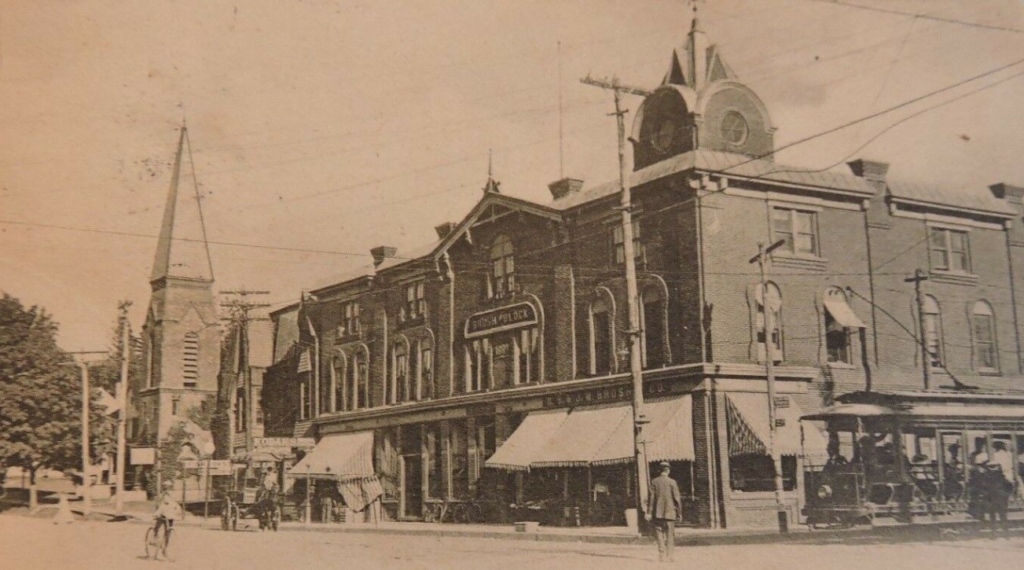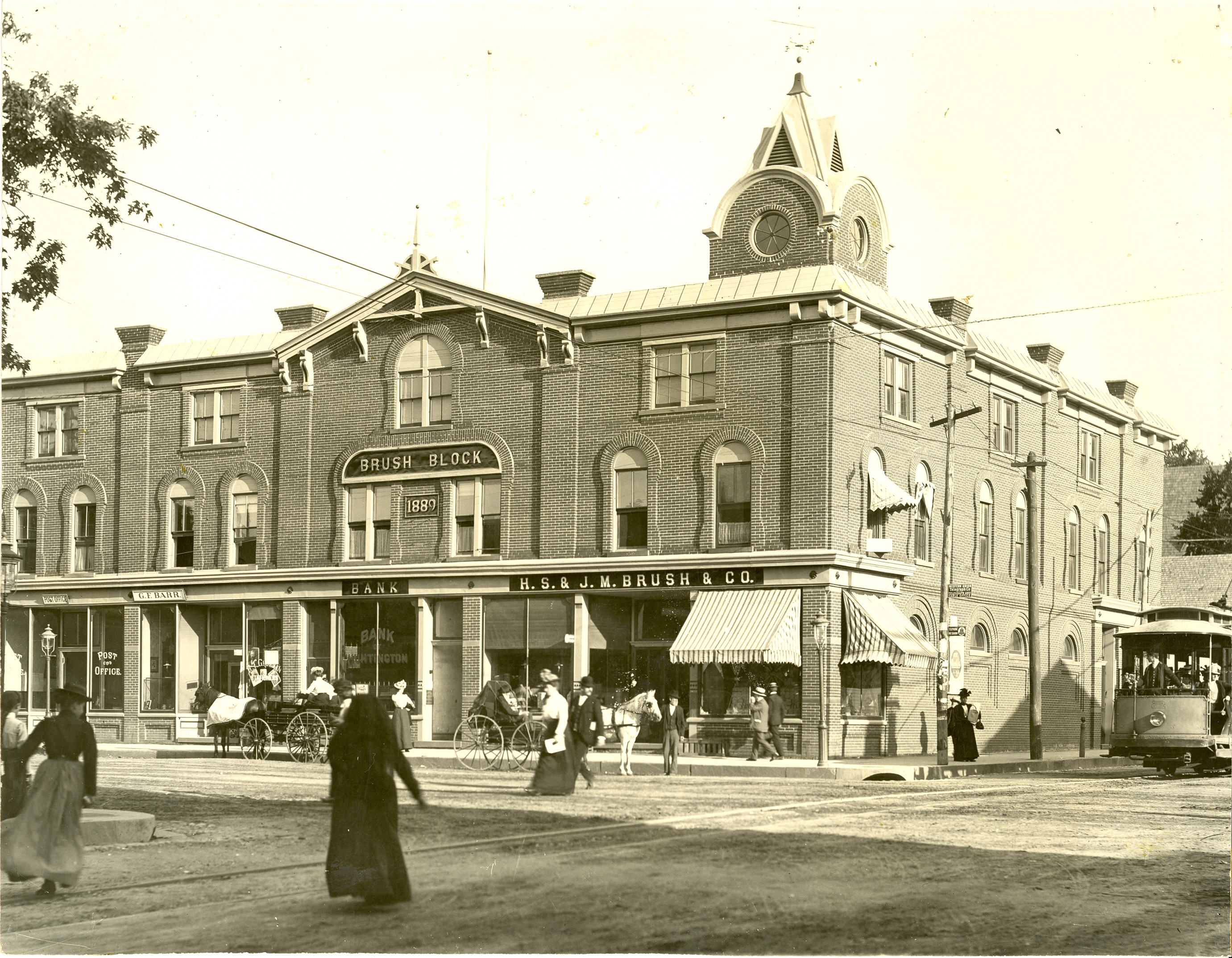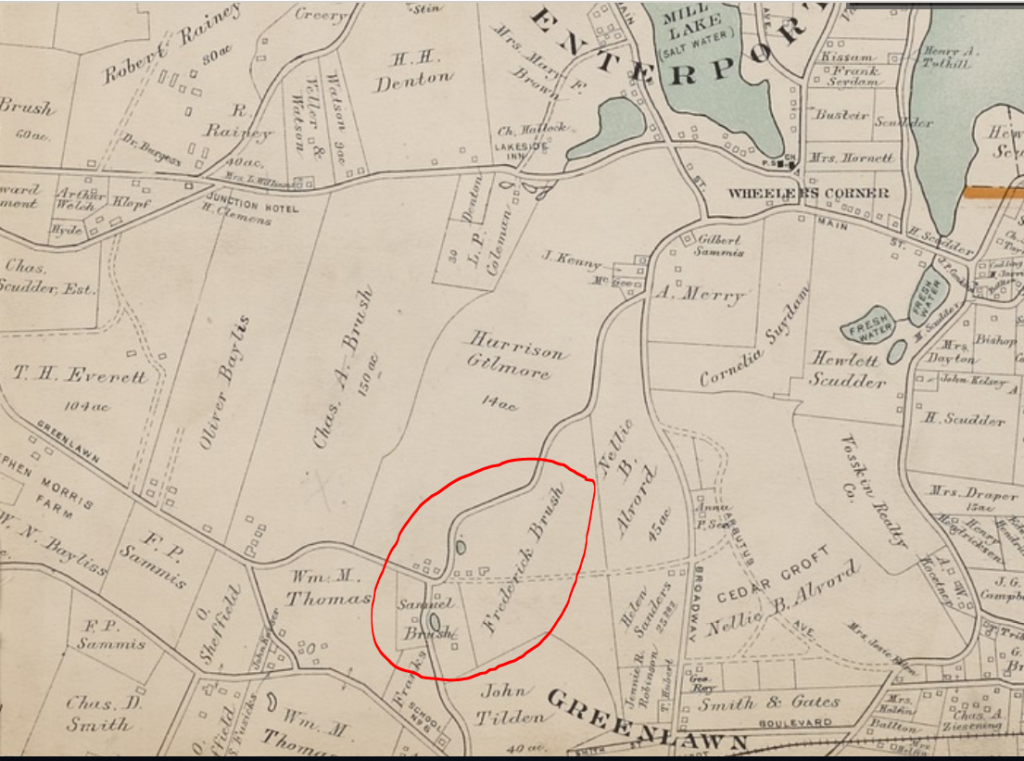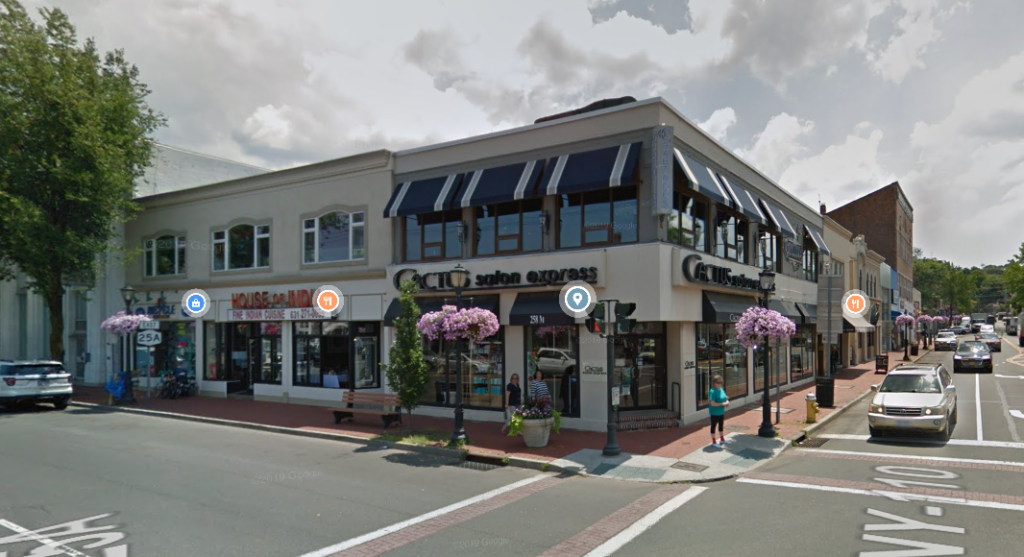Cats in the Mews: August 19, 1897

On this day in history, the business district of Huntington, Long Island, was reportedly “much disturbed” by a strange phenomenon “which was without precedent in the annals of local tradition or the memory of the oldest inhabitant.” According to The New York Times and Brooklyn Times Union, on that day, it rained cats in front of the Brush Block building on Main Street and New York Avenue.
The first person to notice the cats was James Madison Brush, president of the Bank of Huntington, and co-owner of the Brush Block building, where he also ran a general store. James was going about his business as usual when he noticed that his store was suddenly filled with feline customers of all shapes, sizes, and colors.
As James began leading the cats back outside, he was amazed to find the street filled with cats! For every cat he drove out of the store, 15 more rushed in. He told a reporter from the Brooklyn Times Union that he couldn’t walk anywhere without stepping on a cat.
Soon, every businessman in the neighborhood was hard at work chasing the cats out of their stores. Customers of the human kind could do nothing but walk cautiously along the sidewalk as the men used brooms to sweep cats out and hold others at bay. For more than an hour, the community was engaged in hunting out, dislodging, and pursuing the feline invaders.

Although no one could say exactly how many cats there were, “Everybody was sure that the meteorological eccentricities of the season had culminated at last in a downpour such as had never before occurred, even on Long Island, where the air is likely at any time to yield strange things.”
Showers of toads, grasshoppers, small snakes, and fish were not infrequent in Huntington, but a downpour of cats led to all kinds of superstitions. Soon, everyone was calling their friends in other towns to ask, “Is it raining cats with you?”

Just as soon as the cats appeared, they all seemed to disappear. So, how were the people of Huntington to prove that they had not all gone cat crazy?
According to The New York Times, James had captured and kept one cat, thinking he could use it as evidence. But many argued that one cat was not enough to prove that it had rained cats on Main Street. (The cat ended up winning over James, who decided to keep the cat for his store.)
Real estate men suggested various schemes for using the phenomenon as a way of promoting the sale of lots in town. However, there was serious doubt that a reputation for having a deluge of cats would be to the town’s advantage, even if it was the only town in the world where such a thing had happened.
Cashier Conklin Lets the Cat of the Bag
Finally, it was Douglas Conklin, the cashier at the Bank of Huntington, who let the cat out of the bag. He told everyone that he had seen four men drive up Main Street in a wagon containing filled bags. The men drove down a side street, where they opened the bags and released the cats. Then they drove away.
Douglas said he did not know the men, but when he realized they were pulling a big practical joke on the town, he played along and remained quiet. It is not known where the cats went after they disappeared from the streets, but we can only hope that they all had homes to return to.
As the newspapers noted, the men obviously spent a lot of time and some money gathering all the cats (and how did they get them into the bags?!). It was surmised that they “exhausted the available cat supply of half a dozen Long Island towns.”
I’m wondering if these weren’t some of the excess postal cats that the New York City post office used to ship by mail bags to other post office sub-stations when the feline population got out of control…
The Brush Block Building

During the mid-1800s, the block on the south side of Main Street east of New York Avenue was occupied by a row of wood frame buildings. The general store owned by James Brush and his brother-in-law Henry S. Brush was in the two-story corner building (an attorney named Thomas Young rented the second floor). Next was the Bank of Huntington, a stationery store owned by Edward C. Grumman, and George F. Barr’s jewelry store.
At the end of what was called the Brush block was the post office; the law offices of Charles R. Street, who was also the postmaster, occupied rooms above the post office. To the east of this block of buildings were the carriage factory of Ebenezer Jarvis, James B. Scudder’s harness shop, and the Second Presbyterian Church.

On September 12, 1888, a large fire destroyed all the buildings along Main Street from New York Avenue to the Second Presbyterian Church. Henry and James quickly erected a new, three-story Brush Block building on the site, which was then one of the largest buildings in Huntington.
The building still exists, although it no longer has a third floor (part of the floor was removed in 1927 and the other part in 1937).
James Madison Brush
James Madison Brush, the son of James Madison Brush and Sarah Downing, was born on the old family farm at Old Fields (now Greenlawn) on November 20, 1845. Fifth in a family of 12 children, he was a descendant of Richard Brush, who settled in West Neck after emigrating from England in 1672.

Following his schooling at the local district school, Brush worked with Captain John Dickerson in his country store at Centerport for several years. After attending business college in Poughkeepsie, New York, he worked as a clerk in the general store of Rogers, Sammis and Scudder in the Village of Huntington.

In 1875, James and his brother-in-law, Supervisor Henry S. Brush, started a general store on Main Street in Huntington, which brought the men much success. Ten years later, he organized the private bank of James M. Brush & Co., which was later merged into the Bank of Huntington. Brush served as president of this bank until his death.
Brush died on January 29, 1902, following a diabetic incident at his home. He was survived by his wife, Emma, his daughter, Emma, and several siblings.
At the time of his death, Frederick Brush took over the eastern half of the family farm.





My great grandfather was Irving Elmore Brush, the brother of James Madison and Henry Brush who had the store and bank in the Brush Block. Two of their sisters, Ada M and Phebe K spent time against their will in a local insane asylum which was quite a scandal in its’ day.
Oh, how sad and yet interesting at the same time. My mother grew up in Huntington, right near the beach, and her mom (my grandmother) was also placed in an asylum against her will. What was going on in Huntington, I wonder?